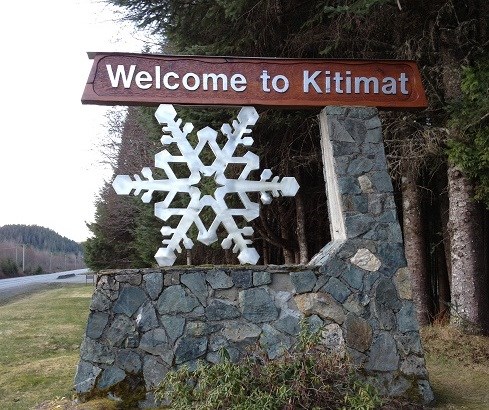It's the other acronym for LNG – listings now gone.
Annelise Miller is testament to how crazy life has become in the once-sleepy community of Kitimat.
Born and raised in what has become British Columbia's economic hotspot, Annelise admits to wondering about her small town's future now that LNG Canada – Canada's largest-ever private sector investment – is moving full steam ahead.
For the time being, she’s far too busy to worry.
As one of only seven real estate agents in Kitimat, her telephone at Calderwood Realty hasn't stopped ringing.
"I now know how it feel to be in a call centre."
With thousands of men and women destined for Kitimat to construct and operate a $40 billion liquefied natural gas plant, the local housing market is on fire.
"I've sold so many homes in the past month that I've honestly lost count," says Miller.

Not surprisingly, the law of supply and demand has quickly led to sharply higher prices. Kitimat realtors note that earlier this year, their average home price was around $275,000 – but today, it's easily over $400,000.
"I know of homes which have sold, sight unseen, to investors from Vancouver, Calgary and Edmonton," says Miller. Real estate agents from slower B.C. housing markets have expressed an interest in relocating to Kitimat.
As Kitimat’s real estate sector booms, elsewhere it has slowed down.
"Our market has clearly shifted," says Okanagan Mainline Real Estate Board president Marv Beer. His region only reported 585 residential closings last month, compared to nearly 750 a year ago – and according to Beers, that’s due to the provincial Speculation Tax targeting empty residences. The B.C. Real Estate Association (BCREA) estimates that one in five residential sales in the Okanagan involves buyers from outside B.C.
However, as the saying goes, one man's trash is another man's treasure. The Kamloops and District Real Estate Association president Doren Quinton says the tax in the Kelowna region has steered more purchasers to his community, although he too has noticed a market shift in recent months, saying "prospective buyers are becoming more cautious."
While Kamloops and area homes sales are showing a year-to-date decline of 9%, the average house price has climbed 9.2% to nearly $428,000.
As for the housing market further north, The B.C. Northern Real Estate Board reports sales have slowed, though prices remain generally stable. While communities such as Prince George, and Prince Rupert are reporting fewer sold signs in 2018, Williams Lake, Quesnel and Terrace continue to post modest increases.
So where is the Interior real estate market heading?
“It’s anyone’s guess,” says BCREA economist Brendon Augmundson. While he does see a modest correction in the short term for the overall B.C. market, Augmundson says there are also rumblings that Ottawa's more stringent mortgage stress test may be eased sooner than later – and that could ignite a new round of buying.
In short, with the exception of communities impacted by the current LNG excitement, the Interior housing market is once again returning to balance.
The question is, for how long?
As always, I welcome your comments on Twitter @kammornanchor
Bob Price is a veteran B.C. broadcaster who anchored the morning news on CHNL radio in Kamloops for the past 30 years. Bob is also a past Webster Award winner whose previous stops included Vancouver and Calgary.


